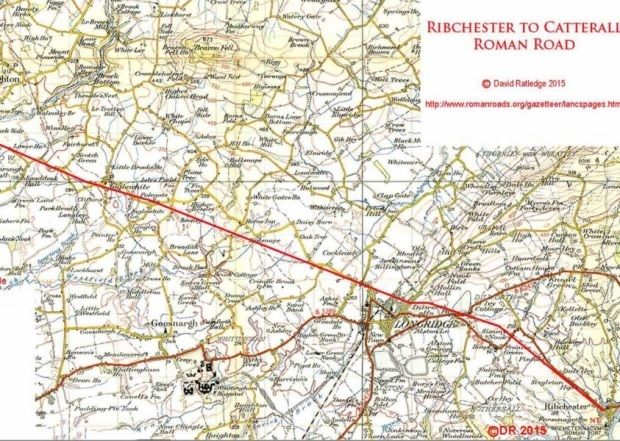Post by UKarchaeology on Sept 26, 2015 22:12:58 GMT

A man who has been researching Lancashire’s Roman roads for more than 45 years believes he has solved one of the county’s biggest puzzles - the route the Romans took from Ribchester to Lancaster - by using lasers.
David Ratledge says this is the first “new” Roman road discovered in the county for 150 years.
Ribchester and Lancaster were the county’s most important Roman sites, so good communications between them must have been essential, he says.
“Suggestions of a route were shown on the First Edition Ordnance Survey Maps of c. 1850. These depicted ‘Ancient Causeways’ both over Longridge Fell and approaching Galgate from the village of Street,” he said, adding: “From that day on there has been endless speculation as to the route taken between these two suggestions, but hard evidence was remarkably elusive. The answer was simple - the road took a different course altogether.”
David discovered the route of the missing road using Lidar imagery, explaining this new remote sensing technique uses lasers to measure precise ground topology (heights).
Lidar is probably most famous for revealing the lost Cambodian city of Angkor, featured in a BBC documentary.
“However, it is equally relevant to Lancashire and linear features can show up clearly - even roads nearly 2,000 years old,” said David, adding the answer was surprising.
“Rather than following the Ordnance Survey route, it took a very sensible and economical route via Longridge and Inglewhite to Catterall, near Garstang. Here it joined another Roman Road, the main road from the south heading to Lancaster. The alignments used are typical of Roman engineering, running straight for several miles but cleverly dog-legging up to Longridge to reduce the gradient.”
He says site visits have confirmed it is real, with several stretches surviving albeit somewhat worse for wear.
He said: “This was to be expected given that the Romans stopped maintaining it over 1600 years ago! There is a previously known Roman milestone adjacent to the route although its provenance is uncertain as it has been moved and re-erected.”
David, who wrote and maintained the Roman Roads webpages, which ran for more than 12 years on Lancashire County Council’s website, says they now have a new home with the Roman Roads Research Association, at www.romanroads.org/gazetteer/lancspages.html
The detailed route has been deposited with Peter Iles, LCC’s specialist advisor for archaeology.
(pic & source: www.garstangcourier.co.uk/news/lost-roman-road-is-discovered-1-7474112 )
